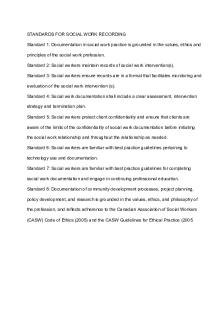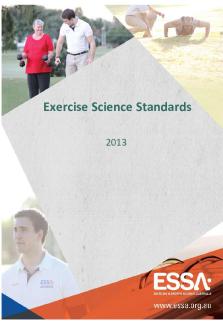AS varying standards PDF

| Title | AS varying standards |
|---|---|
| Course | Chemistry and Material Science |
| Institution | University of Technology Sydney |
| Pages | 8 |
| File Size | 223.2 KB |
| File Type | |
| Total Downloads | 113 |
| Total Views | 175 |
Summary
Different standards...
Description
AS 1391—2007
AS 1391—2007
Australian Standard®
This is a free 7 page sample. Access the full version online.
Metallic materials—Tensile testing at ambient temperature
This Australian Standard® was prepared by Committee MT-006, Mechanical Testing of Metals. It was approved on behalf of the Council of Standards Australia on 7 May 2007. This Standard was published on 12 July 2007.
The following are represented on Committee MT-006: • • • •
Bureau of Steel Manufacturers of Australia Materials Australia National Association of Testing Authorities National Measurement Institute
This Standard was issued in draft form for comment as DR 06728. Standards Australia wishes to acknowledge the participation of the expert individuals that contributed to the development of this Standard through their representation on the Committee and through public comment period.
Keepin g Stand tandard ards up-t p-to-date o-date
This is a free 7 page sample. Access the full version online.
Australian Standards® are living documents that reflect progress in science, technology and systems. To maintain their currency, all Standards are periodically reviewed, and new editions are published. Between editions, amendments may be issued. Standards may also be withdrawn. It is important that readers assure themselves they are using a current Standard, which should include any amendments that may have been published since the Standard was published. Detailed information about Australian Standards, drafts, amendments and new projects can be found by visiting www.stan www.standards.org.au dards.org.au Standards Australia welcomes suggestions for improvements, and encourages readers to notify us immediately of any apparent inaccuracies or ambiguities. Contact us via email at [email protected] [email protected], or write to Standards Australia, GPO Box 476, Sydney, NSW 2001.
AS 1391—2007
Australian Standard® Metallic materials—Tensile testing at ambient temperature
This is a free 7 page sample. Access the full version online.
Originated as AS A23—1928. Previous edition AS 1391—2005. Fourth edition 2007.
COPYRIGHT © Standards Australia All rights are reserved. No part of this work may be reproduced or copied in any f orm or by any means, electronic or mechanical, including photocopying, without the written permission of the publisher. Published by Standards Australia GPO Box 476, Sydney, NSW 2001, Australia ISBN 0 7337 8280 9
AS 1391—2007
2
PREFACE This Standard was prepared by Standards Australia Committee MT-006, Mechanical Testing of Metals to supersede AS 1391—2005, Metallic materials—Tensile testing at ambient temperatures. The objective of this edition is to revise the allowable methods for preparing samples for tensile testing. This Standard is one of a series of Standards covering the range of tensile testing methods. The series comprises the following: AS 1391
Metallic materials—Tensile testing at ambient temperature (this Standard)
1545
Methods for the calibration and grading of extensometers
1855
Methods for the determination of transverse properties of round steel pipes
2291
Metallic materials—Tensile testing at elevated temperatures
2403
Method for the measurement of plastic strain ‘r’ of sheet and strip metals
This is a free 7 page sample. Access the full version online.
The terms ‘normative’ and ‘informative’ have been used in this Standard to define the application of the appendix to which they apply. A ‘normative’ appendix is an integral part of a Standard, whereas an ‘informative’ appendix is only for information and guidance.
3
AS 1391—2007
CONTENTS Page 1 2
SCOPE ........................................................................................................................ 5 REFERENCED DOCUMENTS .................................................................................. 5
3
DEFINITIONS ............................................................................................................ 5
4 5
TEST CONDITIONS................................................................................................... 8 SYMBOLS AND DESIGNATIONS ........................................................................... 8
6 7
TEST PIECE ............................................................................................................. 10 MARKING THE ORIGINAL GAUGE LENGTH (Lo).............................................. 11
8
ACCURACY OF TESTING APPARATUS .............................................................. 12
9 10
TESTING RATE ....................................................................................................... 12 DETERMINATION OF THE PERCENTAGE PLASTIC EXTENSION AT MAXIMUM FORCE (Ag).......................................................................................... 13
11
DETERMINATION OF PERCENTAGE ELONGATION AFTER FRACTURE (A) ........................................................................................................ 13
12
DETERMINATION OF PERCENTAGE TOTAL ELONGATION AT MAXIMUM FORCE (Agt) ......................................................................................... 14 DETERMINATION OF THE PERCENTAGE YIELD POINT EXTENSION (Ae) ............................................................................................................................ 15
This is a free 7 page sample. Access the full version online.
13 14 15
DETERMINATION OF PROOF STRENGTH, PLASTIC EXTENSION (Rp) .......... 15 DETERMINATION OF PROOF STRENGTH, TOTAL EXTENSION (Rt).............. 16
16
METHOD OF VERIFICATION OF PERMANENT SET STRENGTH (Rr) ............. 16
17 18
DETERMINATION OF PERCENTAGE REDUCTION OF AREA (Z).................... 16 ACCURACY OF THE RESULTS............................................................................. 16
19 20
RECORD OF RESULTS .......................................................................................... 16 TEST REPORT ......................................................................................................... 17
21
FORCE-EXTENSION DIAGRAMS ......................................................................... 18
22
TEST PIECE FORMS ............................................................................................... 25
APPENDICES A TYPES OF TEST PIECE TO BE USED FOR THIN PRODUCTS: SHEETS, STRIPS AND FLATS BETWEEN 0.1 mm AND 3 mm THICK ............................... 28 B TYPES OF TEST PIECE TO BE USED FOR WIRE, BARS AND SECTIONS WITH A DIAMETER OR THICKNESS OF LESS THAN 4 mm ........................................ 31 C TYPES OF TEST PIECE TO BE USED FOR SHEETS AND FLATS OF THICKNESS EQUAL TO OR GREATER THAN 3 mm AND WIRE, BARS AND SECTIONS OF DIAMETER OR THICKNESS EQUAL TO OR GREATER THAN 4 mm.......................................................................................................................... 32 D TYPES OF TEST PIECE TO BE USED FOR TUBES.............................................. 35 E PRECAUTIONS TO BE TAKEN WHEN MEASURING THE PERCENTAGE ELONGATION AFTER FRACTURE IF THE SPECIFIED VALUE IS LESS THAN 5%........................................................................................................ 37 F MEASUREMENT OF PERCENTAGE ELONGATION AFTER FRACTURE BASED ON SUBDIVISION OF THE ORIGINAL GAUGE LENGTH .................... 38 G DETERMINATION OF THE PERCENTAGE PLASTIC ELONGATION WITHOUT NECKING (Awn) FOR LONG PRODUCTS SUCH AS BARS, WIRE AND RODS.. 40
AS 1391—2007
H
This is a free 7 page sample. Access the full version online.
I J
4
AN ‘ERROR BUDGET’ APPROACH TO THE ESTIMATION OF THE UNCERTAINTY OF MEASUREMENT IN TENSILE TESTING............................ 41 DESIGNATION OF TEST PIECE AXES ................................................................. 45 LOCATION AND PREPARATION OF SAMPLES AND TEST PIECES................ 49
5
AS 1391—2007
STANDARDS AUSTRALIA Australian Standard Metallic materials—Tensile testing at ambient temperature 1 SCOPE This Standard specifies methods by which a test piece of metal is strained in uni-axial tension at room temperature in order to determine one or more of its tensile properties. It defines the properties to be determined and the terms used in describing tests and test pieces. The Standard also specifies the dimensions of standard test pieces and methods for tensile testing a wide range of product forms. Where material Standards (product Standards) specify the dimensions of the test piece, those dimensions take precedence over the dimensions which are specified in Appendices A and C. 2 REFERENCED DOCUMENTS The following documents are referred to in this Standard: AS 1545 1654 1654.2
ISO system of limits and fits Part 2: Tables of standard tolerance grades and limit deviations for holes and shafts
2193
Calibration and classification of force-measuring systems
ISO 2566 2566-1 2566-2
Steel—Conversion of elongation values Part 1: Carbon and low alloy steels Part 2: Austenitic steels
5725 5725-2
This is a free 7 page sample. Access the full version online.
Methods for the calibration and grading of extensometers
Accuracy (trueness and precision) of measurement methods and results Part 2: Basic method for the determination of repeatability reproducibility of a standard measurement method
and
3 DEFINITIONS For the purpose of this Standard, the following definitions apply. 3.1 Elongation Increase in the original gauge length (Lo) at any moment during the test (see Figure 1). 3.2 Engineering stress At any moment during the test, force divided by the original cross-sectional area (S o) of the test piece. 3.3 Extensometer gauge length (Le ) Length of the parallel portion of the test piece used for the measurement of extension by means of an extensometer. NOTE: It is recommended that for measurement of yield and proof strength parameters L e should span as much of the parallel length of the test piece as possible. Ideally, as a minimum, L e should be greater than 0.50 L o but less than 0.9 L c. This should ensure that the extensometer detects all yielding events that occur in the test piece. It is further recommended that for measurement of parameters ‘at’ or ‘after’ maximum force, L e is approximately equal to L o. www.standards.org.au
Standards Australia
This is a free 7 page sample. Access the full version online.
AS 1391-2007 Metallic materials - Tensile testing at ambient temperature
The remainder of this document is available for purchase online at www.saiglobal.com/shop
SAI Global also carries a wide range of publications from a wide variety of Standards Publishers:
Click on the logos to search the database online....
Similar Free PDFs

AS varying standards
- 8 Pages

Varying and setting aside orders
- 4 Pages

NMBA Standards
- 2 Pages

Standards Hotel
- 59 Pages

Chapter-02-standards
- 13 Pages

Joint-charging-standards
- 1 Pages

Teaching Standards Tracker
- 10 Pages

Chapter 2 professional standards
- 35 Pages

Standards for recording
- 2 Pages

AES-Professional-Standards
- 31 Pages

Ch01-accounting-standards
- 14 Pages

Biology NSW Education Standards
- 4 Pages
Popular Institutions
- Tinajero National High School - Annex
- Politeknik Caltex Riau
- Yokohama City University
- SGT University
- University of Al-Qadisiyah
- Divine Word College of Vigan
- Techniek College Rotterdam
- Universidade de Santiago
- Universiti Teknologi MARA Cawangan Johor Kampus Pasir Gudang
- Poltekkes Kemenkes Yogyakarta
- Baguio City National High School
- Colegio san marcos
- preparatoria uno
- Centro de Bachillerato Tecnológico Industrial y de Servicios No. 107
- Dalian Maritime University
- Quang Trung Secondary School
- Colegio Tecnológico en Informática
- Corporación Regional de Educación Superior
- Grupo CEDVA
- Dar Al Uloom University
- Centro de Estudios Preuniversitarios de la Universidad Nacional de Ingeniería
- 上智大学
- Aakash International School, Nuna Majara
- San Felipe Neri Catholic School
- Kang Chiao International School - New Taipei City
- Misamis Occidental National High School
- Institución Educativa Escuela Normal Juan Ladrilleros
- Kolehiyo ng Pantukan
- Batanes State College
- Instituto Continental
- Sekolah Menengah Kejuruan Kesehatan Kaltara (Tarakan)
- Colegio de La Inmaculada Concepcion - Cebu



